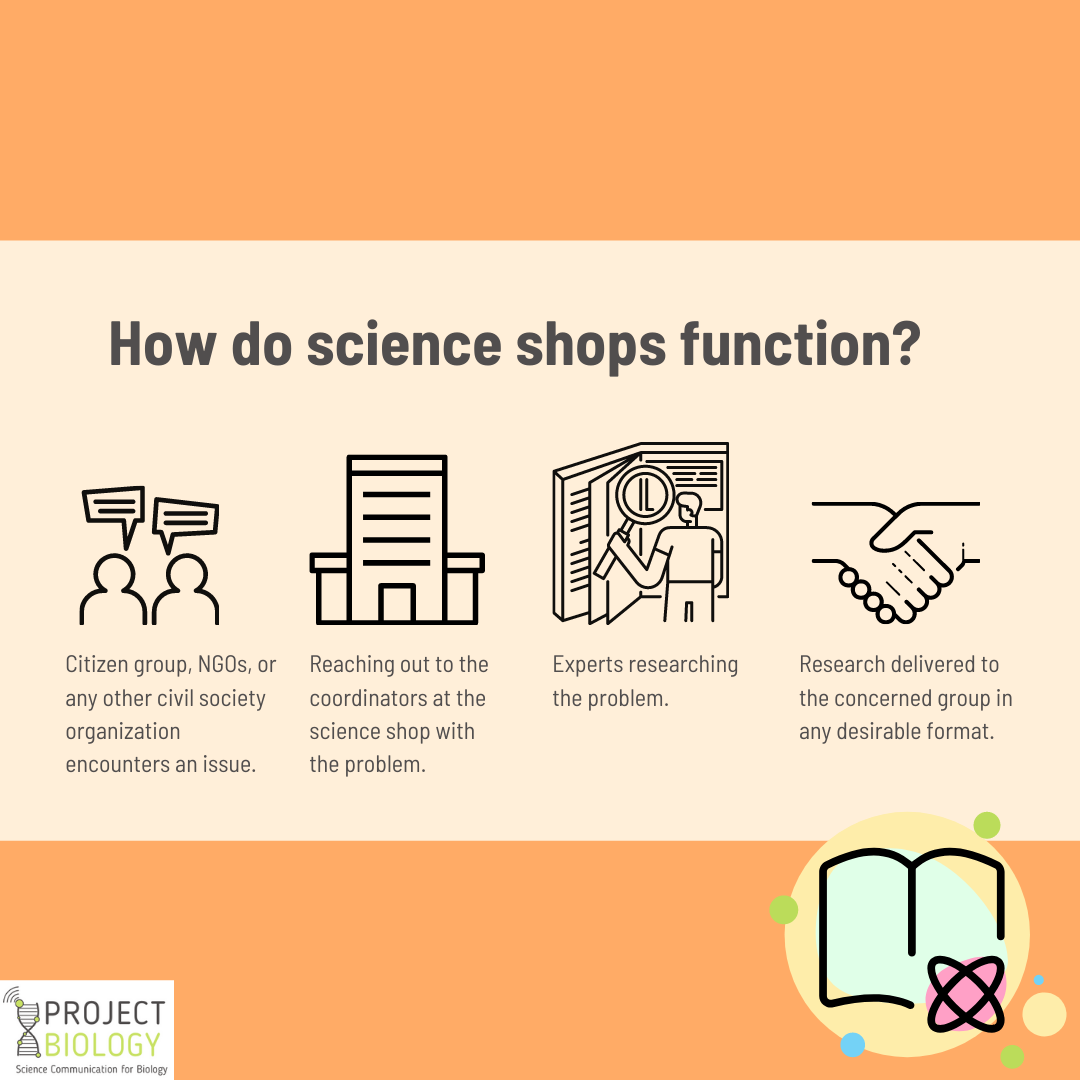Scientists spend hours together in their laboratory meticulously trying to look out for answers to scientific mysteries. Their efforts do not stop there. The scientific findings need to reach the common man, politicians, peers, funding agencies, and policymakers to make science strive. This calls for the notion of marketing science and forging better public relations.
Here one can utilize Social marketing. Social marketing includes implementing marketing strategies to bring about social change by understanding the target audience, realizing their problems, and offering solutions. It thus paves the way to conduct science communication more effectively and efficiently.
One of the frequently conducted social marketing initiatives entails health communication campaigns—an example of science communication integrated with social marketing. Thus, understanding the factors that shape a successful health communication campaign and its impact remains crucial.
Why assessing the impact is essential?
As per WHO, communication can help alter the knowledge levels and influence attitudes. Thus, communication efforts need to be measured over how well they contribute to achieving the health impact.
Although communication alone cannot help achieve the desired goals and objectives, it needs to be strategically knit in the more considerable campaign planning. Upon implementing the project, a formative or baseline evaluation can help assess the target audience’s existing status of knowledge and attitudes. In contrast, the evaluations conducted later can help assess the change.
According to Dr. Leslie B. Snyder, one of the pioneers exploring the play of social marketing and impact assessment in health communication, the concept of ‘Effect size’ forms the basis of quantifying a campaign’s success. In communication sciences, ‘Effect size’ measures the change of stance in individuals from exposure to specific media communication about a particular issue.
Put simply, effect size helps quantify the difference in the point of view of a group of people from pre-campaign to post-campaign.
How evaluating the impact of a campaign helps?
For discerning whether a campaign was successful or not, it is essential to know how effective it was.
- According to Dr. Snyder, evaluating the impact of a campaign helps establish a benchmark against which a specific campaign’s effects can be compared.
- It helps establish goals for future campaigns and guides designing evaluations.
- Knowing your scores after writing an exam gives you encouragement in case you did well. In case you did not, you yearn to do well in your next attempts. Similarly, evaluating the effectiveness of a campaign helps determine the campaigns’ impact and whether further changes are required.
- It helps in identifying the community or population of people interested in the issue.
- One can identify and take the necessary steps to correct errors and mistakes/misstatements.
- It enables the sharing of accomplishments with current and potential funding agencies.
- The learnings can be incorporated into future communication campaigns.
- It can be used to demonstrate to other stakeholders that your program is effective, based on evidence.
What affects the effect size?
In one of her research, Dr. Snyder compiled over 400 campaigns covering various topics about public health globally. She observed an average effect of a 5 % rise in adopting healthy behavior in the target community post the health communication campaigns.
The campaigns related to seatbelt usage, dental care, and alcohol control in adults were highly successful, with 15 %, 13%, and 11% effect size, respectively. At the same time, youth drug and marijuana campaigns had the least success with a 1 to 2% effect size.
Results showed that it is difficult to reform any behavior once it becomes a habit like a drug and marijuana usage among young adults. However, it is easier to alter non-habitual practices by individuals like seat belts while driving and dental care.
The factors seen to produce improved outcomes are:
- Promoting the adoption of healthy behavior or alternate options rather than stopping the unhealthy one.
- Habitual behaviors are more difficult to modify than once-in-a-while ones.
- Direct communication with the audience, instead of any intermediaries.
- Administer the message of the campaign through different channels
- Repeated exposure (i.e., high frequency) of the message to the audience.
- Sustained media activity to ease the decline in behavior change when the campaign ends.
How to measure the effectiveness of a digital campaign?
Digital marketing campaigns provide easy access to a global audience as compare to print marketing campaigns. Here we tell you ways to track social media.
- Google analytics- Here, a piece of code is added to each page’s HTML script, which then starts collecting information about a website.
- Targeted and analytics on social media platforms
- Facebook-Track number of followers/likes/shares
- Twitter – Monitor mentions through hashtags
- Instagram-Track number of followers/views/likes/shares
- You Tube-Track number of views
- Website Monitoring-Track number of daily or monthly visitors and page views
- Email Lists-How many people opened your email?
- Blog-Track number of subscribers, page, views, and comments left by visitors
WHO proposes a 7-step process that could be used to improve communication and evaluate results.
Family planning: Marketing the science in India
Family planning remains a significant global health initiative as population pressure grows. Thus, family planning campaigns prove crucial in not ensuring the health of the mother and child and the economic growth of the community and country.
India’s approach to family planning through Societal and Behavioural Change Communication (SBCC)
Main Kuch Bhi Kar Sakti Hoon, or MKBKSH, which translates to I, A Woman, Can Achieve Anything, by the Population Foundation of India, is one of the many family planning initiatives in India. The TV show aims to challenge the socio-cultural social norms that are highly prevalent in Indian society.
It includes family planning, early marriage, contraceptive use, forced abortions, domestic violence, and gender selection. It is a trans-media entertainment-education drive that left an immensely positive effect on its viewers’ perception and behavior. However, a lot more investment in SBCC is required to channelize science and tackle the root level issues.
In India, there is a patriarchal system’s widespread existence. Though there are family planning programs initiated by the Indian government, there exists a gap in achieving the required effect.
Such as skewed budgetary allocation to terminal methods and inadequate focus on training the service providers and Behavioural Change Communication. Deep-seated social norms associated with family planning and female health issues, lack of spousal communication require strategic SBCC initiatives.
What Dr. Snyder recommends:
Dr. Snyder analyzed the impact of 39 campaigns from 1986 to 2001 on family planning in developing countries using meta-analysis. Results showed a positive impact on the individual’s behavioral change outlining the following points for future family planning campaigns and their evaluation.
- Identify average campaign effect, exposure size (number of individuals who showed up for the campaign), previous knowledge, attitude towards the issue, interpersonal communication with the spouse, and behavior while setting goals of a campaign.
- Considering an individual who wishes to practice family planning methods but has not taken any action yet.
- Consider using the effect size as a benchmark for future campaigns.
- Maintain complete evaluation data with even the most minute detail like mean, standard deviation, and date of administrations, etc.
- Maintain a complete evaluation report with even the most detailed information like the campaigns and channel used characteristics.
- Analyze the data directly and correlate the exposure size and effect size of the campaign
How to market science campaigns better?
Three aspects crucial to campaign planning and assessment include:
Campaign goals: Clearly define the goals of a campaign. Goals are the targets of a campaign desired to be achieved over a period of time. For instance, let us take a campaign that asks Indian women to improve their nutritional habits, mostly by eating iron-rich foods to reduce anemia. This campaign aims to increase women aged 20 to 50 years in India for over five years. This campaign’s objective is the detailed version of the goal, which is increased intake of iron, is quantifiable, and hence can gauge the campaign’s success.
Outcomes: The outcomes of a campaign might be an increase in knowledge or awareness of an issue. However, Dr. Snyder recommends the inclusion of behavior changes goals also. Sometimes, there is a knowledge or communication gap, and people might not act on what they know.
Population: The chances of a campaign becoming more successful is when its population is homogenous. A tailormade message impacts more than a non-tailormade one. A mixed population may result in a lower success rate. Though targeting is done based on demographics, it is better to make meaningful subgroups and make messages designed for each group depending on their beliefs, behaviors, environmental barriers, and other factors.
For example, in the case of a fruit and vegetable campaign. There is a heterogeneous population of individuals with a specific medical condition and individuals with no such complaints. It is better to bifurcate both these populations and plan strategies accordingly than to keep them together and apply a general marketing strategy. There might be more behavioral changes in a group with health issues as they might be more motivated to take up healthy eating habits.



